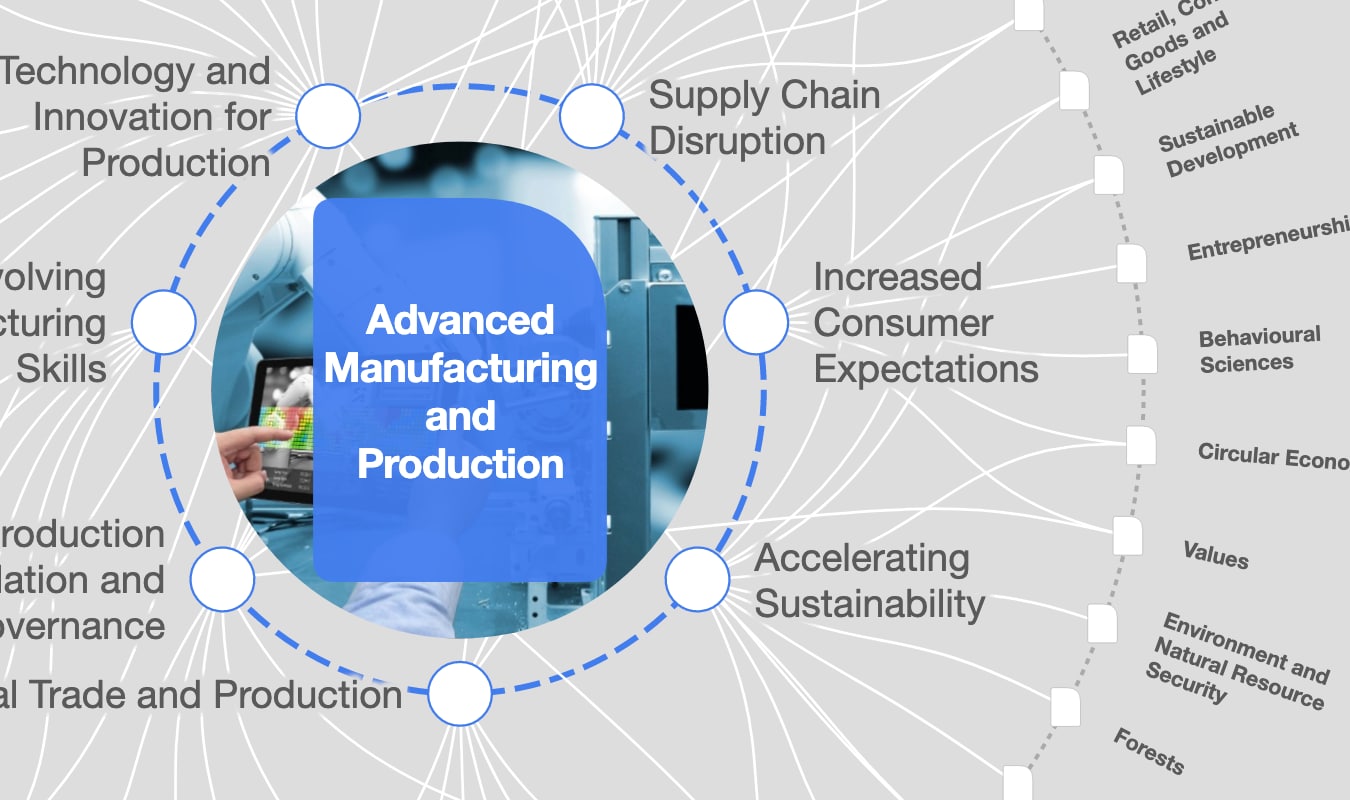How robotics and AI are reshaping heavy industry by automating the un-automatable

The LSP Center's multi-robot gantry will allow for welding maritime structures directly from digital design data. Image: Odense Port/LSP
- Heavy industry is one of the last frontiers of automation.
- Many of society's heavy industries — shipbuilding, construction, offshore energy — remain analogue in a digital world.
- A new centre in Denmark aims to develop advanced robotic and digital solutions for heavy industry.
Heavy industry remains one of the last frontiers of automation. In an age of digital transformation, many of society’s foundational industries – shipbuilding, construction, offshore energy – remain predominantly analogue. These sectors form the physical backbone of our economies, yet their production methods are often manual, slow and difficult to scale or decarbonize.
This presents a structural problem. As nations race to meet climate goals, modernize infrastructure and address skilled labour shortages, we urgently need smarter, more efficient ways to build large-scale physical assets.
But while digital solutions are revolutionizing sectors like finance, retail and healthcare, the factories that produce wind turbine towers or maritime vessels still rely heavily on human welding, lifting and fitting.
This is beginning to change, however. A new centre in Denmark is showing how robotics and artificial intelligence (AI) can reshape how we build the physical infrastructure of the future.
Robotic and digital solutions for building large, complex structures
At the harbour in Odense, Denmark – a historic maritime city now emerging as a hub for robotics innovation – construction is under way for the new Large Structure Production (LSP) Center. Spearheaded by the University of Southern Denmark, the LSP Center aims to develop advanced robotic and digital solutions specifically for the production of large, complex structures such as ships, offshore platforms and modular buildings.
The facility covers around 2,500 square metres of lab and workshop space and is being built with an investment of around €37 million ($41.4 million), supported by European and Danish funding, a donation from the A.P. Moller Foundation and co-financing from the university itself. It includes a 27 metre-high hall tailored to handle structures the size of ship sections or wind turbine components.
Unlike traditional factories that rely on fixed automation, the LSP Center is pioneering mobile, adaptive systems with the ultimate goal of rethinking not just individual tasks, but entire production flows for massive and variable products.
“Large structure production has long resisted automation because of its scale, complexity and low production volume,” said Professor Christian Schlette, leader of the LSP Center. “But with new robotic systems, AI-driven process planning and digital twin technologies, we can begin to change that.”
From shipyards to smart yards
The LSP Center is designed as a full-scale testbed and development environment, bringing together academia, robotics engineers and leading industrial partners to co-create scalable, transferable technologies. Its research spans across mobile robotic platforms that can move around large components, intelligent software that adjusts in real time to shifting workflows, and digital twin models that map entire production processes in virtual space.
One key challenge is mobility. In car manufacturing, products move through highly structured production lines designed for speed and repetition. In contrast, large structure production is defined by scale and immobility – components like wind turbine towers or ship blocks are too large to be easily moved.
What is the World Economic Forum doing about the Fourth Industrial Revolution?
Instead, robots, tools and sensors must be mobile and able to navigate around the structure itself. Adding to the complexity, production sites such as shipyards and construction zones are constantly changing environments. These conditions make automation difficult – but increasingly possible with adaptive technologies.
By using sensors, perception systems and AI algorithms, robotic systems can now perceive their surroundings, make real-time decisions and adapt to different geometries and tasks. Combined with digital twin technology, this enables dynamic planning and feedback loops – critical for environments where change is constant.
A central ambition of the LSP Center is to make these solutions applicable beyond the lab. The technologies are developed in close collaboration with companies in the maritime and offshore energy sectors, including Danish and international players aiming to stay competitive in a low-carbon economy.
A model for the future of sustainable production
The implications extend far beyond Denmark.
As many governments push for sustainable infrastructure and energy independence, demand for large-scale physical production – of ships, wind farms, infrastructure, houses and more – is set to rise. Yet without innovation in how these structures are built, scaling up could mean simply scaling inefficiencies and emissions.
The LSP model offers a different path. By embedding flexibility into automation and integrating digital tools across the production cycle, it is possible to make large-scale manufacturing not only more productive, but also more sustainable and resilient.
For instance, simulation-driven production planning enables testing and optimization before materials are used, reducing waste and downtime. Robotic systems can improve precision and minimize rework. And by relocating repetitive or hazardous tasks to machines, companies can improve workplace safety and address growing labor shortages.
These benefits are particularly relevant for regions where industrial capacity is under pressure, or where green transition plans require massive buildouts of new infrastructure. From shipyards in Asia to offshore platforms in the North Sea, the principles developed at the LSP Center could be adapted globally to meet local needs.
The power of interdisciplinary innovation
One of the core lessons from LSP is that no single discipline or actor can solve these challenges alone.
The centre thrives on interdisciplinary collaboration – combining insights from mechanical engineering, robotics, computer science, architecture and manufacturing. It also bridges the gap between academia and industry, ensuring that innovation is grounded in real-world needs and constraints.
This model of co-creation is essential in fields where innovation must be both fast and feasible. It also aligns with broader trends in research and development, where applied science and public-private partnerships are increasingly seen as keys to competitiveness.
Why now? Timing matters. The LSP Center is being developed at a moment when the confluence of labour shortages, climate goals and digital maturity is forcing a rethinking of industrial production.
What was once considered too complex to automate is becoming feasible. Robotic hardware has become more affordable and mobile. AI is more powerful and accessible. Industry is more open to experimentation. And the urgency of decarbonization has created a window of opportunity to leapfrog outdated methods.
The question is no longer whether large structure production can be automated – but how quickly we can make it happen in a way that is economically and environmentally viable.
Blueprint for automation
Transforming the heavy industries that shape our world is no small task. But with targeted innovation, interdisciplinary collaboration and a willingness to rethink how we build, the path forward is becoming clearer.
The Large Structure Production Center in Odense represents not just a physical facility, but a blueprint for how we might automate the un-automatable – making the industries of the past ready for the demands of the future.
As the world faces mounting pressure to build smarter, faster and greener, models like LSP offer a glimpse of what’s possible when ambition meets collaboration – and when digital tools are applied to some of our oldest and most essential industries.
Don't miss any update on this topic
Create a free account and access your personalized content collection with our latest publications and analyses.
License and Republishing
World Economic Forum articles may be republished in accordance with the Creative Commons Attribution-NonCommercial-NoDerivatives 4.0 International Public License, and in accordance with our Terms of Use.
The views expressed in this article are those of the author alone and not the World Economic Forum.
Stay up to date:
Future of Manufacturing
Forum Stories newsletter
Bringing you weekly curated insights and analysis on the global issues that matter.
More on Technological InnovationSee all
Megan Gerryts and Jeffrey Brown
December 16, 2025







